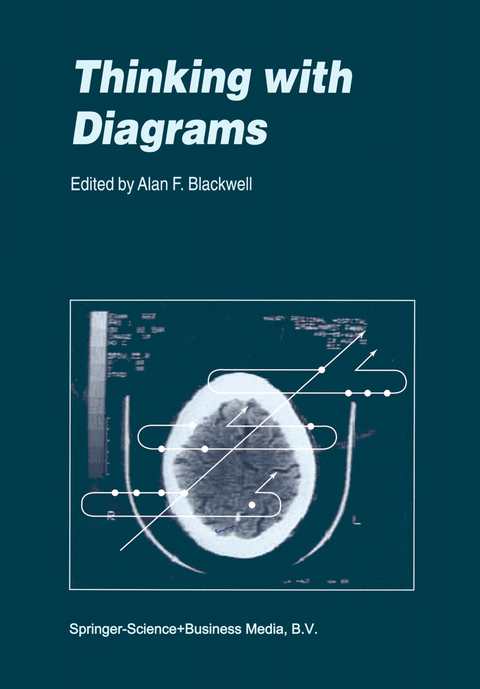
Thinking with Diagrams
Seiten
2001
|
Reprinted from ARTIFICIAL INTELLIGENCE REVIEW, 15:1-2
Springer (Verlag)
978-0-7923-6944-8 (ISBN)
Springer (Verlag)
978-0-7923-6944-8 (ISBN)
This book provides an introductory overview of the rapid growth in interdisciplinary research into Thinking with Diagrams. This book includes chapters commissioned from leading researchers in the major disciplines involved in diagrams research.
This book provides an introductory overview of the rapid growth in interdisciplinary research into Thinking with Diagrams. Diagrammatic representations are becoming more common in everyday human experience, yet they offer unique challenges to cognitive science research. Neither linguistic nor perceptual theories are sufficient to completely explain their advantages and applications. These research challenges may be part of the reason why so many diagrams are badly designed or badly used. This is ironic when the user interfaces of computer software and the worldwide web are becoming so completely dominated by graphical and diagrammatic representations. This book includes chapters commissioned from leading researchers in the major disciplines involved in diagrams research. They review the philosophical status of diagrams, the cognitive processes involved in their application, and a range of specialist fields in which diagrams are central, including education, architectural design and visual programming languages. The result is immediately relevant to researchers in cognitive science and artificial intelligence, as well as in applied technology areas such as human-computer interaction and information design.
This book provides an introductory overview of the rapid growth in interdisciplinary research into Thinking with Diagrams. Diagrammatic representations are becoming more common in everyday human experience, yet they offer unique challenges to cognitive science research. Neither linguistic nor perceptual theories are sufficient to completely explain their advantages and applications. These research challenges may be part of the reason why so many diagrams are badly designed or badly used. This is ironic when the user interfaces of computer software and the worldwide web are becoming so completely dominated by graphical and diagrammatic representations. This book includes chapters commissioned from leading researchers in the major disciplines involved in diagrams research. They review the philosophical status of diagrams, the cognitive processes involved in their application, and a range of specialist fields in which diagrams are central, including education, architectural design and visual programming languages. The result is immediately relevant to researchers in cognitive science and artificial intelligence, as well as in applied technology areas such as human-computer interaction and information design.
Introduction: Thinking with Diagrams.- The Graphic-Linguistic Distinction.- Aligning Logical and Psychological Perspectives on Diagrammatic Reasoning.- Diagrammatic Reasoning: An Artificial Intelligence Perspective.- Cognitive Science Approaches To Understanding Diagrammatic Representations.- Cognitive Factors in Programming with Diagrams.- Learning to Think and Communicate with Diagrams: 14 Questions to Consider.- Thinking with Diagrams in Architectural Design.
| Erscheint lt. Verlag | 30.4.2001 |
|---|---|
| Zusatzinfo | VIII, 150 p. |
| Verlagsort | Dordrecht |
| Sprache | englisch |
| Maße | 210 x 297 mm |
| Themenwelt | Geisteswissenschaften ► Psychologie ► Allgemeine Psychologie |
| Informatik ► Theorie / Studium ► Künstliche Intelligenz / Robotik | |
| ISBN-10 | 0-7923-6944-0 / 0792369440 |
| ISBN-13 | 978-0-7923-6944-8 / 9780792369448 |
| Zustand | Neuware |
| Haben Sie eine Frage zum Produkt? |
Mehr entdecken
aus dem Bereich
aus dem Bereich
Buch | Softcover (2024)
REDLINE (Verlag)
CHF 27,95
Eine kurze Geschichte der Informationsnetzwerke von der Steinzeit bis …
Buch | Hardcover (2024)
Penguin (Verlag)
CHF 39,20


